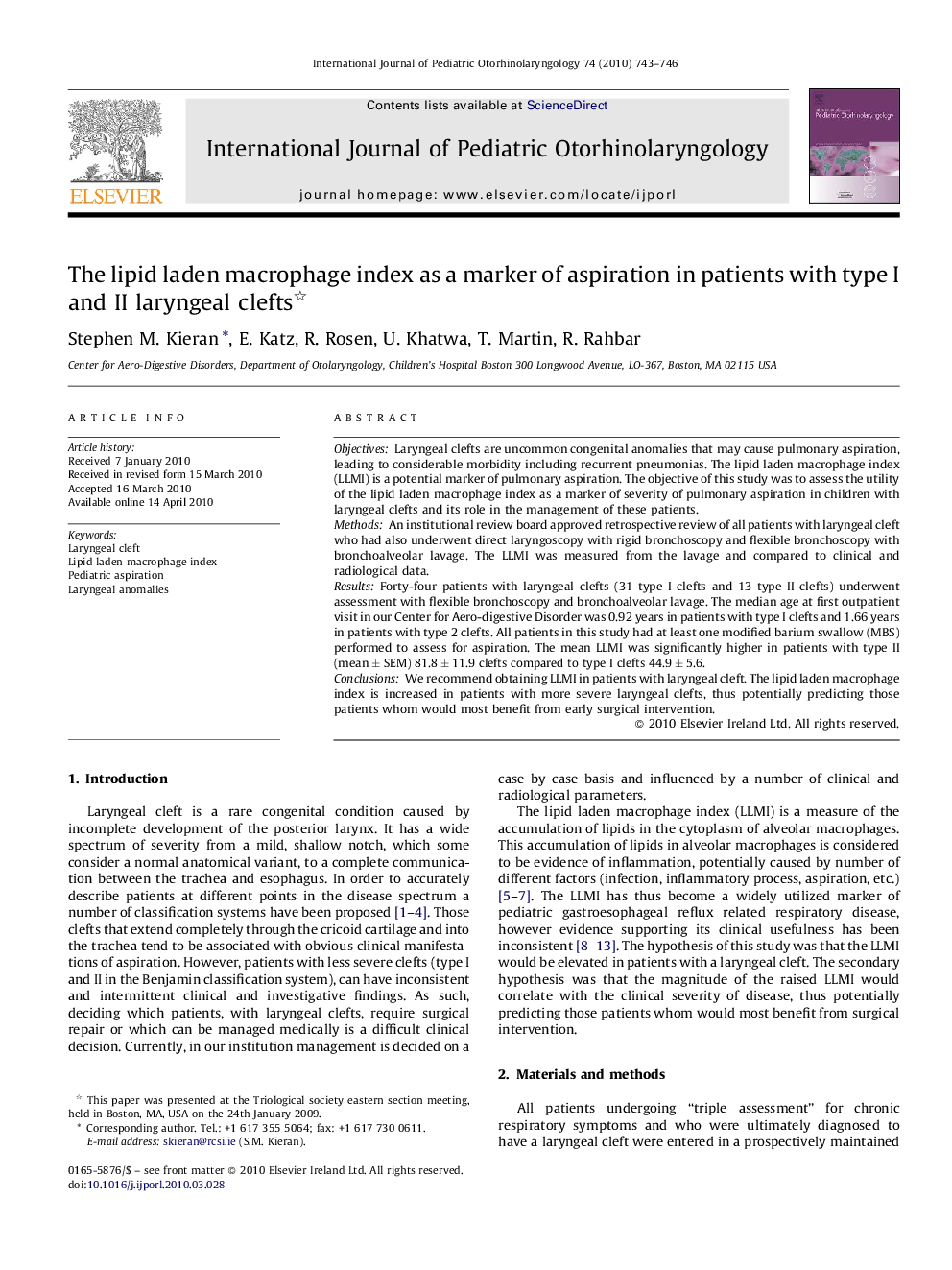| Article ID | Journal | Published Year | Pages | File Type |
|---|---|---|---|---|
| 4112841 | International Journal of Pediatric Otorhinolaryngology | 2010 | 4 Pages |
ObjectivesLaryngeal clefts are uncommon congenital anomalies that may cause pulmonary aspiration, leading to considerable morbidity including recurrent pneumonias. The lipid laden macrophage index (LLMI) is a potential marker of pulmonary aspiration. The objective of this study was to assess the utility of the lipid laden macrophage index as a marker of severity of pulmonary aspiration in children with laryngeal clefts and its role in the management of these patients.MethodsAn institutional review board approved retrospective review of all patients with laryngeal cleft who had also underwent direct laryngoscopy with rigid bronchoscopy and flexible bronchoscopy with bronchoalveolar lavage. The LLMI was measured from the lavage and compared to clinical and radiological data.ResultsForty-four patients with laryngeal clefts (31 type I clefts and 13 type II clefts) underwent assessment with flexible bronchoscopy and bronchoalveolar lavage. The median age at first outpatient visit in our Center for Aero-digestive Disorder was 0.92 years in patients with type I clefts and 1.66 years in patients with type 2 clefts. All patients in this study had at least one modified barium swallow (MBS) performed to assess for aspiration. The mean LLMI was significantly higher in patients with type II (mean ± SEM) 81.8 ± 11.9 clefts compared to type I clefts 44.9 ± 5.6.ConclusionsWe recommend obtaining LLMI in patients with laryngeal cleft. The lipid laden macrophage index is increased in patients with more severe laryngeal clefts, thus potentially predicting those patients whom would most benefit from early surgical intervention.
